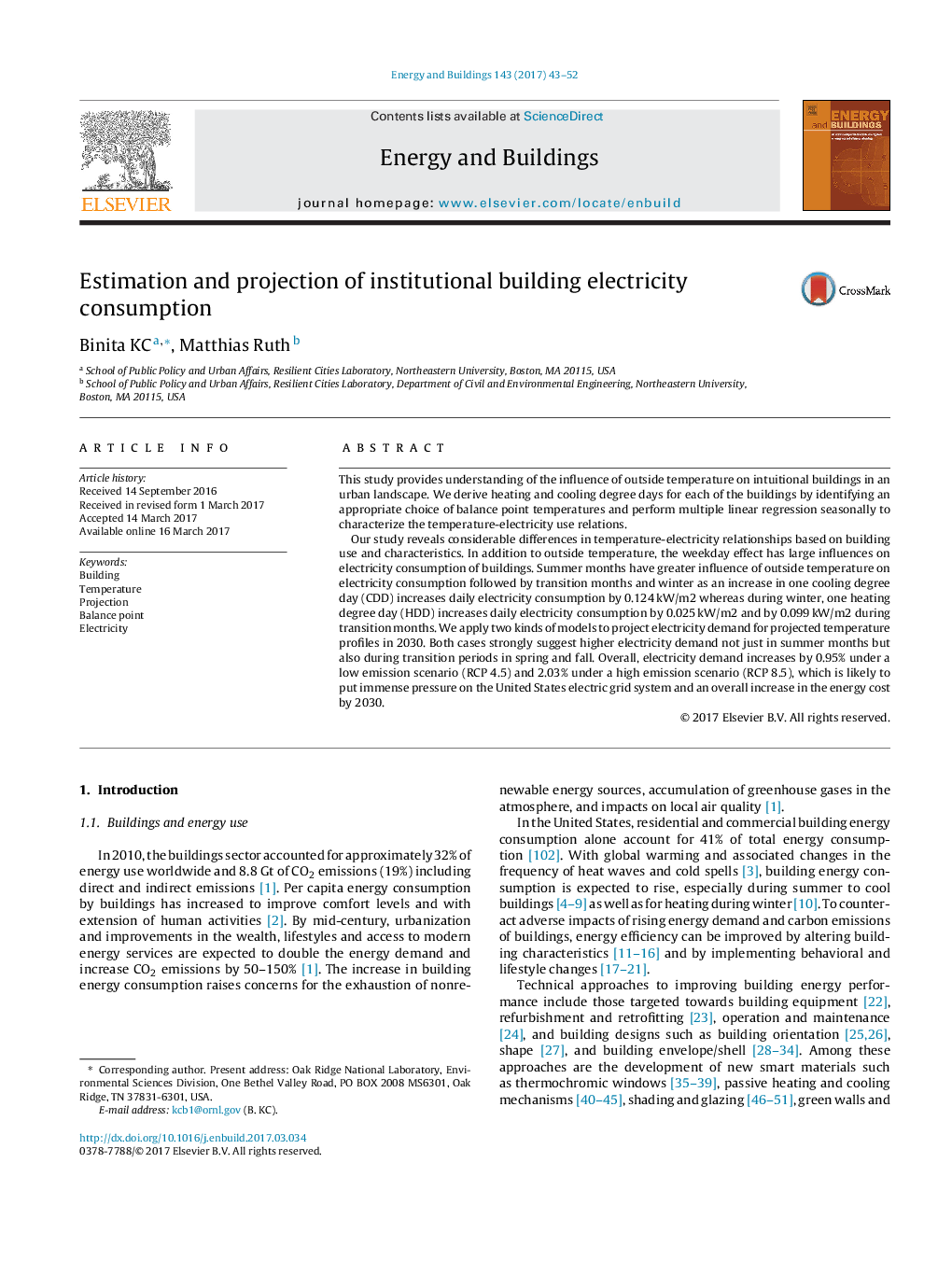| Article ID | Journal | Published Year | Pages | File Type |
|---|---|---|---|---|
| 4914188 | Energy and Buildings | 2017 | 10 Pages |
Abstract
Our study reveals considerable differences in temperature-electricity relationships based on building use and characteristics. In addition to outside temperature, the weekday effect has large influences on electricity consumption of buildings. Summer months have greater influence of outside temperature on electricity consumption followed by transition months and winter as an increase in one cooling degree day (CDD) increases daily electricity consumption by 0.124Â kW/m2 whereas during winter, one heating degree day (HDD) increases daily electricity consumption by 0.025Â kW/m2 and by 0.099Â kW/m2 during transition months. We apply two kinds of models to project electricity demand for projected temperature profiles in 2030. Both cases strongly suggest higher electricity demand not just in summer months but also during transition periods in spring and fall. Overall, electricity demand increases by 0.95% under a low emission scenario (RCP 4.5) and 2.03% under a high emission scenario (RCP 8.5), which is likely to put immense pressure on the United States electric grid system and an overall increase in the energy cost by 2030.
Related Topics
Physical Sciences and Engineering
Energy
Renewable Energy, Sustainability and the Environment
Authors
Binita KC, Matthias Ruth,
